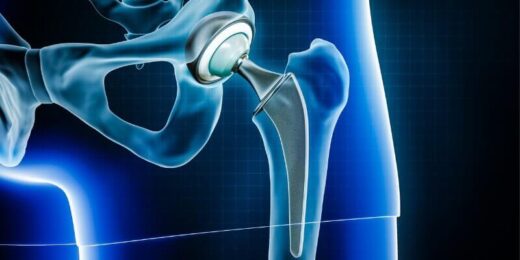Living with chronic hip pain can slowly erode your quality of life. What starts as a dull ache during long walks or restless nights can escalate into a daily burden making it difficult to sit, stand, sleep, or even tie your shoes without discomfort. If you’re reading this, chances are you’ve already tried painkillers, physical therapy, maybe even cortisone injections. Yet the question remains: Is hip replacement surgery the right move?
Let’s walk through what you need to know medically, emotionally, and practically before making a decision that could change how you live, move, and feel.

When Pain Becomes a Lifestyle
Not every ache needs a scalpel. In fact, most orthopedic surgeons will explore conservative treatments first. But when the pain refuses to let up despite all efforts it might be time to consider surgical options.
Hip replacement is most commonly recommended for:
- Osteoarthritis (age-related cartilage wear)
- Rheumatoid arthritis or other autoimmune joint damage
- Hip fractures
- Avascular necrosis (bone death due to poor blood supply)
If any of these diagnoses are familiar, your doctor may have already brought up the idea of surgery. But the decision isn’t just clinical, it’s deeply personal. After all, hip replacement is a major operation, and one that asks you to pause life temporarily in order to return to it fully.
What Actually Happens During Hip Replacement?
The medical term is total hip arthroplasty, and it involves removing the damaged portions of your hip joint and replacing them with artificial components, usually a metal stem inserted into your femur, a ceramic or metal ball, and a plastic or ceramic socket.
The procedure can be done through different techniques:
- Posterior approach (traditional, through the back of the hip)
- Anterior approach (minimally invasive, through the front)
- Robotic-assisted surgery (guided by imaging and AI for precision)
Each method has pros and cons depending on your age, anatomy, lifestyle, and the surgeon’s expertise. While minimally invasive methods can reduce recovery time, they may not be ideal for everyone.
The Emotional Side of Saying Yes
Here’s something not enough people talk about: the emotional hurdle of accepting that you need a joint replaced. It can feel like surrendering to age, illness, or limitation. Some patients even delay surgery for years, hoping they can “manage” the pain a little longer.
But ask anyone who’s had a successful hip replacement, and you’ll often hear the same sentiment: “I wish I had done it sooner.”
Why? Because chronic pain doesn’t just hurt your joints it chips away at your independence, your relationships, your confidence, and your ability to participate in life.
Hip replacement isn’t giving in it’s choosing to move forward.
Who’s the “Right” Candidate?
Hip replacement used to be reserved mostly for patients over 65, but today, younger and more active adults are opting in too. As technology advances and implants become more durable, surgeons are increasingly comfortable recommending the procedure to patients in their 40s or 50s, especially those whose careers or lifestyles are compromised by pain.
You may be a good candidate if:
- Your hip pain limits daily activities like walking, bending, or climbing stairs
- You’ve tried medications and physical therapy without long-term success
- Your sleep is consistently disrupted due to discomfort
- You feel your quality of life is declining because of hip limitations
What to Expect (and What to Be Honest About)
Recovery from hip replacement isn’t a vacation but it also isn’t the grueling journey it once was. Thanks to enhanced recovery protocols, many patients begin walking the same day as surgery with the help of a physiotherapist.
A typical recovery timeline:
- Hospital stay: 1–3 days
- Use of walker/crutches: First 1–2 weeks
- Physical therapy: Daily exercises for 4–6 weeks
- Return to work: 2–6 weeks depending on your job
- Full recovery: Usually within 3 months
Being honest with yourself about your home setup, support system, and mental readiness is essential. Do you live alone? Can someone help with meals and mobility early on? Are you motivated to stick to rehab exercises?
The best outcomes come when medical prepaation meets personal readiness.
Risks and Realities
Every surgery has risks, and hip replacement is no exception. These may include:
- Blood clots
- Infection
- Dislocation of the new joint
- Leg length discrepancy
- Reaction to anesthesia
However, serious complications are relatively rare when surgery is done by an experienced orthopedic surgeon. In fact, hip replacement has one of the highest satisfaction rates of any orthopedic procedure, with over 90% of patients reporting significant pain relief and improved mobility.
The materials used in modern implants are also designed to last 20 years or more, especially in patients who maintain a healthy weight and avoid high-impact activities like running or jumping sports.
Cost and Access
In the U.S. or U.K., hip replacement surgery can come with a hefty price tag often ranging between $30,000 and $50,000, especially if done privately. Wait times in public systems can also stretch for months or even years, depending on the country.
This has led to a growing interest in medical tourism particularly in countries like Turkey, where internationally accredited hospitals and experienced surgeons offer hip replacement procedures at a fraction of the cost, often bundled with accommodation, physiotherapy, and dedicated care coordinators. Erdem Hospital in Istanbul, for instance, combines clinical excellence with a patient-first philosophy focused on comfort, transparency, and aftercare.
Whether you choose to stay local or explore overseas options, always ensure that your surgical team is board-certified, that post-op care is clearly explained, and that you feel informed and not rushed into the process.
The “Aha” Moment
Many patients describe a tipping point, a moment when they realize that living with the pain is no longer worth the wait. Sometimes it’s missing out on a vacation. Sometimes it’s declining another dinner invitation because walking is just too exhausting. Sometimes it’s the simple act of not being able to sleep through the night anymore.
If you’re there or close to it know this: you’re not alone. Every year, over 450,000 people in the U.S. alone undergo hip replacement, and millions more globally have experienced life-changing relief thanks to this surgery.
Don’t Let Fear Make the Decision For You
Surgery is never a light decision. But fear shouldn’t be the reason you stay stuck in pain. The right move is the one that gives you your life back whether that’s through continued therapy or finally scheduling that consultation with an orthopedic surgeon.
If you’ve tried everything else and your hip still rules your life, it may be time to take the next step not just toward surgery, but toward living without pain.
Interested in learning more about hip replacement options abroad?

Hospitals like Erdem Hospital in Istanbul offer comprehensive orthopedic programs with English-speaking staff, individualized recovery plans, and compassionate, transparent care every step of the way.
Let us help you walk confidently into the next chapter of your life.